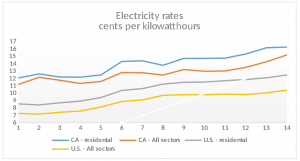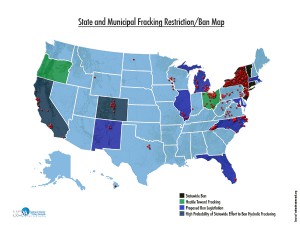Math errors. Exaggerations. Phony metrics. Trickle-down economics. The recent e-mail from JJ McCoy of the Seattle Electric Vehicle Association to the legislature has it all.
Electric car advocates in Washington State are again asking for a sales tax break on top of the existing federal tax credit they receive of $7,500. Their sales tax break costs the state about $10 million a year. To put that in context, that is about one-quarter of the Washington State Salmon Recovery Funding Board’s annual funding.
Put simply, when McCoy’s math is corrected, the environmental value of the $39 million tax break is only $2.6 million — a waste of $36.4 million — not the $18 million benefit he wrongly claimed.
As we’ve pointed out, these tax breaks go predominantly to the wealthiest 10 percent — people who are not price sensitive and would have likely purchased an electric car anyway.
Even worse, much of the argument in favor of extending the sales tax breaks is not only wrong, it contradicts other claims electric car lobbyists make.
Case in point is the e-mail sent by JJ McCoy, lobbyist for the Seattle Electric Vehicle Association and Northwest Energy Coalition. It demonstrates how far those lobbying for these wasteful and ineffective subsidies have to go to assemble an argument.
Here are the claims made by McCoy and the Seattle Electric Vehicle Association, and the reality.
Claim: If the sales tax exemption is allowed to expire, Washington’s market share for plug-in vehicles will drop 63% — that, according to a study by the Keybridge Economic Group, led by former Clinton Council of Economic Advisors Robert Westcott, PhD.
Reality: Actually, the Westcott study does not prove sales would fall this much — it simply assumes it. They write “sales in Washington are assumed to drop from 1.2 percent of total vehicle sales to just 0.5 percent of sales” [emphasis mine]. They get the 0.5 percent figure by using the Oregon level of 0.8 percent and then adjusting downward. Why? The study authors don’t explain. They simply say, “several state-specific factors have created a particularly conducive environment” in Oregon, but don’t explain what the factors are.
McCoy uses this phony math to claim the tax breaks increase sales by 2,100 cars a year. If we use the actual Oregon level as a baseline, the number is 1,111. Even this number is exaggerated. Washington’s median income is about 15 percent higher than Oregon’s, offering a much better environment for buyers with disposable income to buy expensive, luxury cars.
Even with McCoy’s completely unsupported assumption, however, his math does not add up.
Claim: Each of those 2,100 extra cars, powered by Washington’s very clean grid, will avoid nearly 5 tons of carbon emissions annually compared to the average 25 mpg gas car.
Reality: This math is completely inaccurate. Who says so? The Seattle Electric Vehicle Association itself. Its own “EVangelism” flier says electric vehicles would avoid 4.2 tons of CO2 emissions compared to a 23.6 MPG car, or 3.8 tons compared to a 25 MPG car — about 25 percent lower than what McCoy told legislators.
Claim: That’s nearly 75 tons over the 15-year life of the car, and may even be more…
Reality: The Westcott study, the one McCoy cites just two paragraphs earlier, says the average lifespan of an electric vehicle is 12 years, not 15 years. Again, McCoy contradicts his own source studies to exaggerate the benefits of an EV by another 20 percent.
Using McCoy’s own calculations of 3.8 tons per year and a 12-year lifespan, the actual amount of CO2 avoided would be 45.6 tons per year (assuming the grid is 100 percent clean, which it is not). That is 40 percent less than McCoy’s exaggerated e-mail claimed.
Claim: Those avoided emissions are worth $57 million using OFM/Commerce standard methodology for valuing the Social Cost of Carbon (currently about $65 per ton).
Reality: McCoy makes numerous mistakes here.
First, the Social Cost of Carbon is not $65 per ton, it is $65 per metric ton — which reduces the cost by about ten percent (even that number is about five times higher than the EPA calculates). The cost of carbon is universally calculated in metric tons. He doesn’t seem to know the basics of carbon economics.
Second, his own math doesn’t add up to $57 million. He claims, wrongly, that the benefit would increase EV sales by 2,100 cars per year for four years — 8,400 cars. He claims, wrongly, that each car would reduce CO2 emissions by 75 tons over its lifetime. And he claims, wrongly, that each ton is valued at $65. So, the four year total should be 8,400 x 75 x $65, which equals $40,950,000, not $57 million. He’s off by another 22 percent.
But, as we’ve seen, even $40,950,000 is a significant exaggeration. Using the accurate numbers, the total is 4,444 x 45.6 x $59, which equals about $12 million — about one-fifth the amount McCoy claimed.
Again, that calculation uses McCoy’s own numbers cited elsewhere. Using his numbers, he is off by 79 percent.
But it gets much worse.
The key is not the social cost of carbon, but the amount it costs to reduce a metric ton of carbon using other approaches. For example, investing in efforts to reduce methane emissions from landfills costs about $13 per metric ton on the open market and can go down as low as $3. McCoy wants the state of Washington to spend $65 to get what it can receive for $13. If climate change is really as threatening as he and others claim, why would he be willing to waste 80 percent of the money spent to reduce carbon emissions?
Using the market price of carbon reduction, the actual carbon-reduction value of the EV sales tax break is a paltry $2.6 million over four years.
Claim: This is a surplus value of $18 million over the $39 million that HB 2087 will reduce state and local revenue by over its 4-year duration.
Reality: Using the correct calculation, it is actually a loss of $36.4 million to subsidize wealthy electric car buyers. Put another way, for every dollar the state provides subsidizing electric cars to reduce carbon, more than 93 cents is wasted. Nobody who is serious about cutting carbon emissions would advocate such a wasteful environmental policy.
A similar version of this blog post appeared at the Washington Policy Center.


